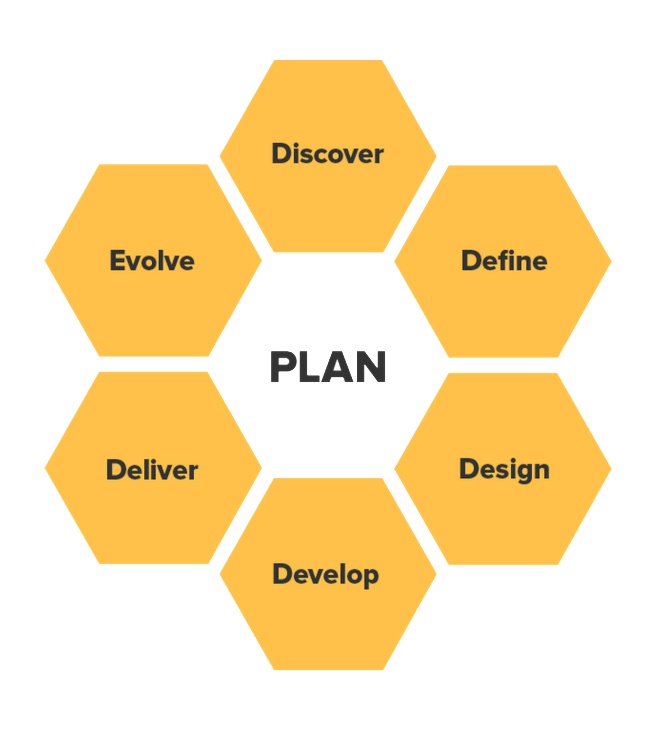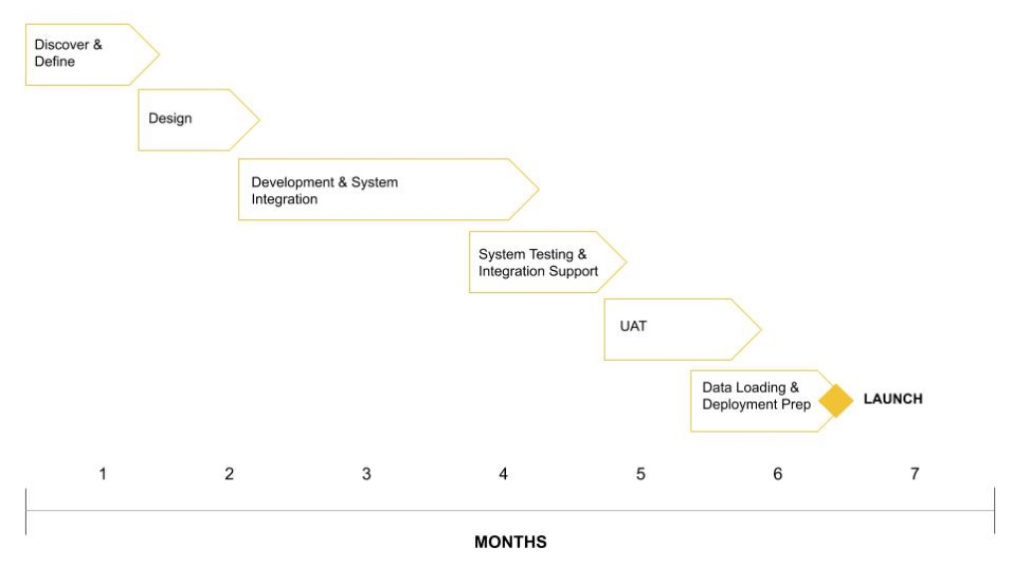This is Part 3 in our B2B e-commerce series. Part 1 focused on B2B Strategy & Differentiation, detailing how B2B e-commerce has evolved and how manufacturers, industrial brands, and distributors can streamline the buying experience. Part 2 focused on gathering your B2B E-Commerce Requirements so you can select the right platform. In Part 3 we’ll delve into how you can plan your launch to maximize your B2B e-commerce success.
Once you’ve set your strategy and selected your platform, it’s time to plan your launch. As you fill in the skeleton of your plan, you should account for both current and future needs. The key is to focus on rapidly launching your B2B e-commerce offering and then evolving it based on your strategy and your customers’ feedback.
Accorin highly recommends using the best practices as defined by PMBOK / Project Management, but even these guidelines may not be enough. To augment your launch, you need a well-defined methodology specifically targeted to e-commerce launches. Accorin has honed our e-commerce site launch methodology for more than a decade. We blend Waterfall principles with Agile techniques to launch, maintain, and continuously improve your site.
Our process has been tested across hundreds of e-commerce deployments, and our clients have come to rely on us to deliver expert e-commerce solutions on-time and on-budget. We use a Waterfall approach to set the strategy, define the requirements and do the Visual, Functional & Technical designs. Development is then done in a series of Agile sprints, each capped by a Sprint Demo, showing incremental progress.
Our Methodology
Our E-commerce methodology can be summed up in the following diagram:
Key Phases
Accorin has defined several key phases for a successful launch, with each phase building upon the prior one.
PHASE: DISCOVER, DEFINE & DESIGN
This is the preliminary phase that includes introducing the team, defining the site requirements, and developing the UX and visual design.
Typical Duration
- 4 – 12 Weeks
Key Activities
- Kickoff (Meeting with all key team members)
- Project Timeline Development (Project plan with key dates and milestones)
- Project Infrastructure Setup (Project management software, asset delivery systems, dev environments, etc.)
- Requirements and Specification (Creation and Signoff)
- B2B Requirements typically stem from business-specific B2B use cases such as:
-B2B order flow from purchase order to checkout
-Unique price and discount tiers
-Customer account types and purchase authorizations
-Customer credit checks and payments
-Paying with credit and credit card (one order / multiple payment types)
-Cross-sell, up-sell, suggestive merchandising based on browsing
-Project-based planning and checkout - Integration Specification (Creation and Signoff)
- Integration specifications for B2B typically include:
-Integration with accounting and credit systems so customers can clearly plan and purchase based on credit available - UX and Visual Designs (Wireframes and representative visual design comps creation and Signoff)
Phase: DEVELOP
This phase is when you get into the technical minutiae of your site. From conversion to integration, you’re transforming the original vision into a fully functioning B2B e-commerce website.
Typical Duration
- 10+ weeks
Key Activities
- Front-end development
- Business rules development / coding
- Data conversion
- Integration into external systems
- Marketing Tools configuration
- Payment, Taxes, Shipping Configurations
- Quality Assurance (Functional, technical, integration, security)
PHASE: DELIVER
Now you’re ready to train your team and launch your site. You’ll test a number of different scenarios during this phase to ensure your customers have the right experience from the moment they log in to the moment they sign off.
Typical Duration
- 1 – 2 months
Key Activities
- Training Documentation / Guides developed and shared
- Training Sessions
- User Acceptance Testing, Issue Resolution and Sign-off
- Pre-launch Communication and Checklist
- Production Data Conversion (If needed)
- Deployment
- Production Environment Certification
- Go Live
PHASE: EVOLVE
Getting to launch is just the first step. All successful e-commerce businesses regularly evolve their underlying platforms if they want to grow. As technology changes and new tools become available, you need to keep up with a rapidly evolving marketplace.
Typical Duration
On-going
Key Activities
- Site evolution and support: Your website evolution will vary based on your industry and customer expectations.
Scheduling & Phasing
Each project is unique, but the following shows a representative timeline for launching a fully-functional B2B e-commerce site with integrations into ERP systems and data conversion activities.
Deployments can be faster or slower, depending on your expectations. A tight scope and ample resources can cut the standard timeline down immensely. The idea is to plan for key dependencies before setting your timeline.
The Bottom Line
Given the complexity of e-commerce, we highly recommend working with an expert e-commerce partner to plan and execute your e-commerce project. If you need help getting your B2B e-commerce initiative to launch, give us a call!
Sign up for the Accorin Newsletter to be notified of new e-commerce focused articles and industry insights.




